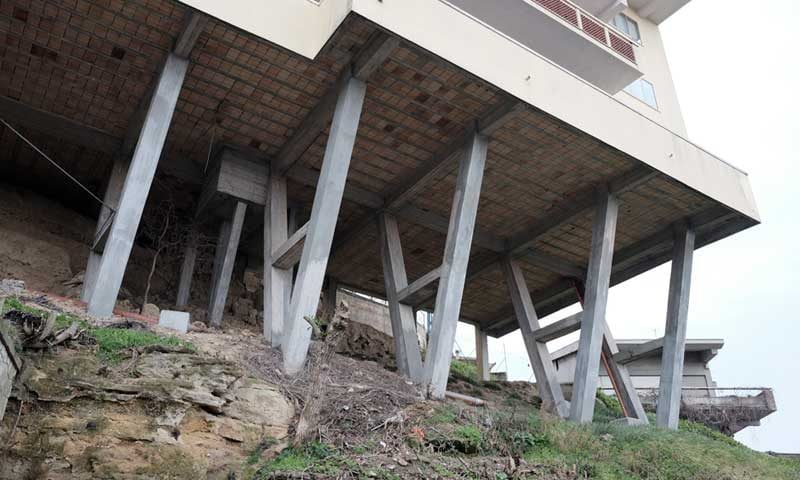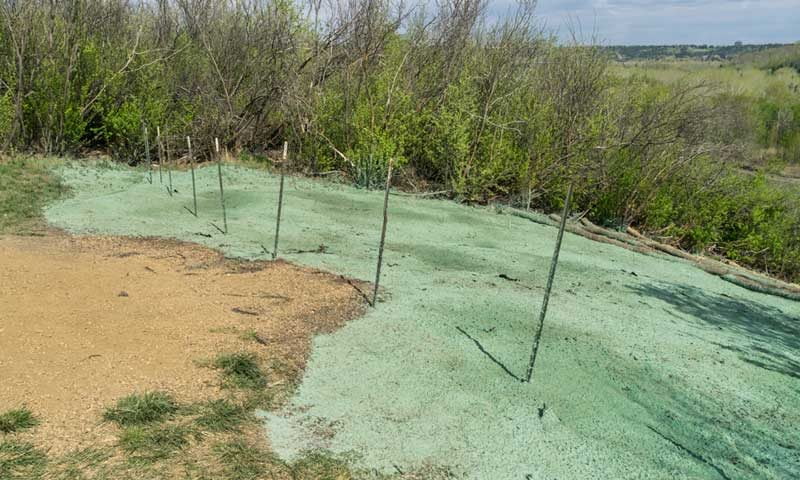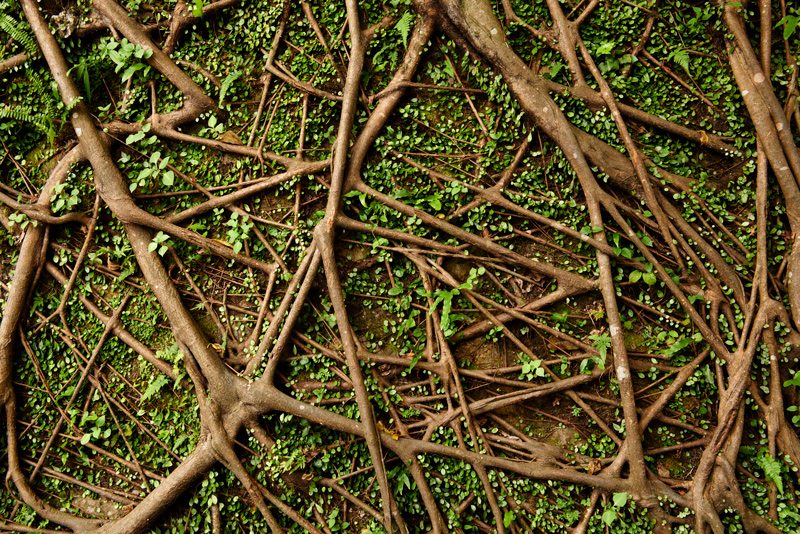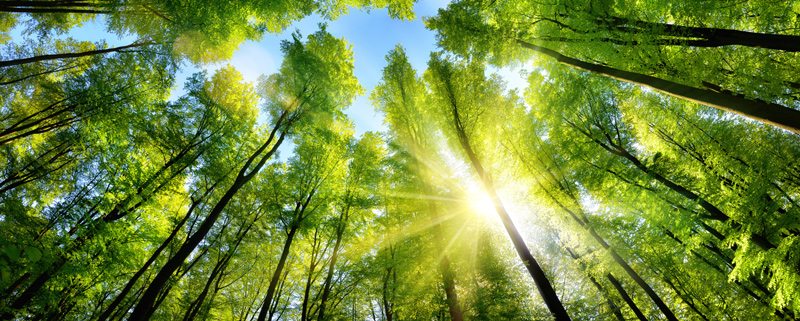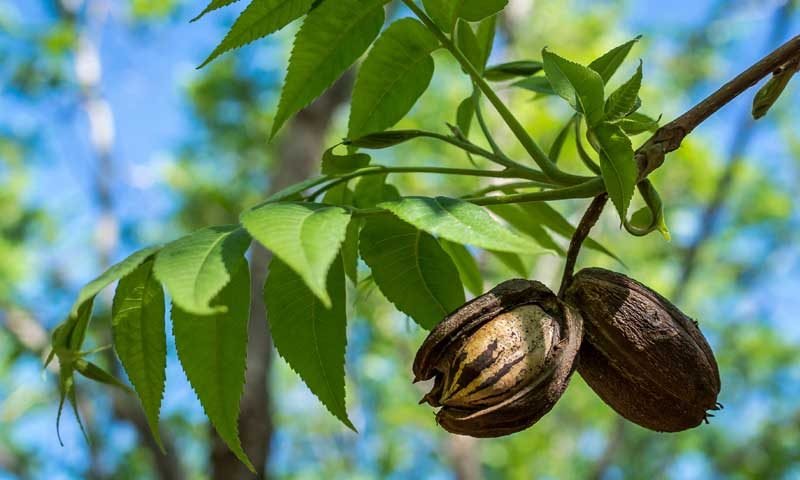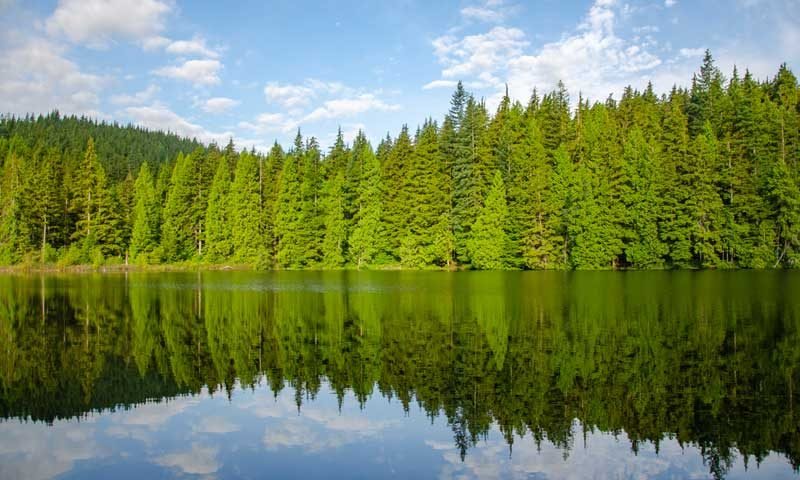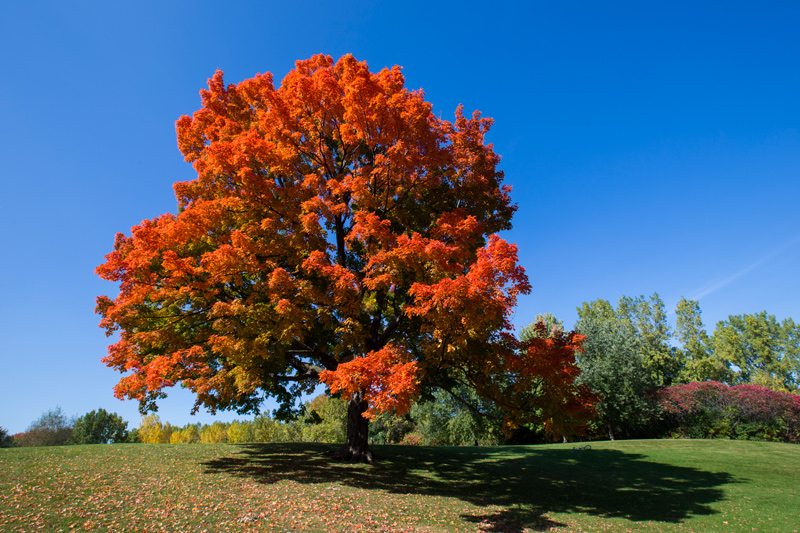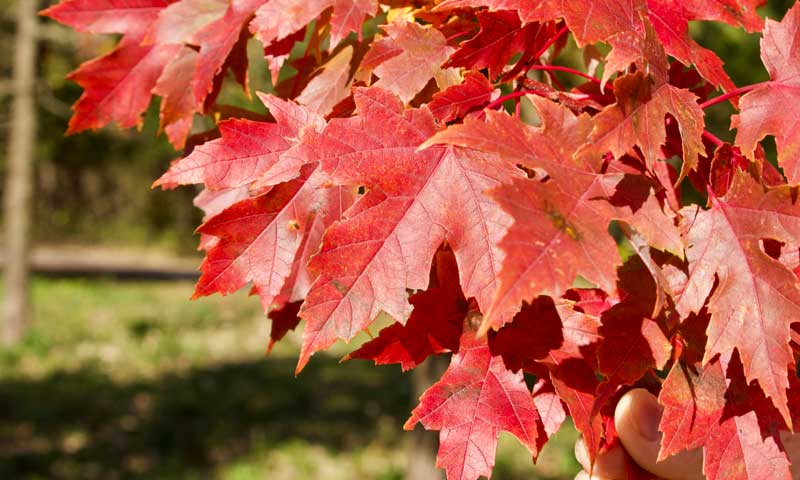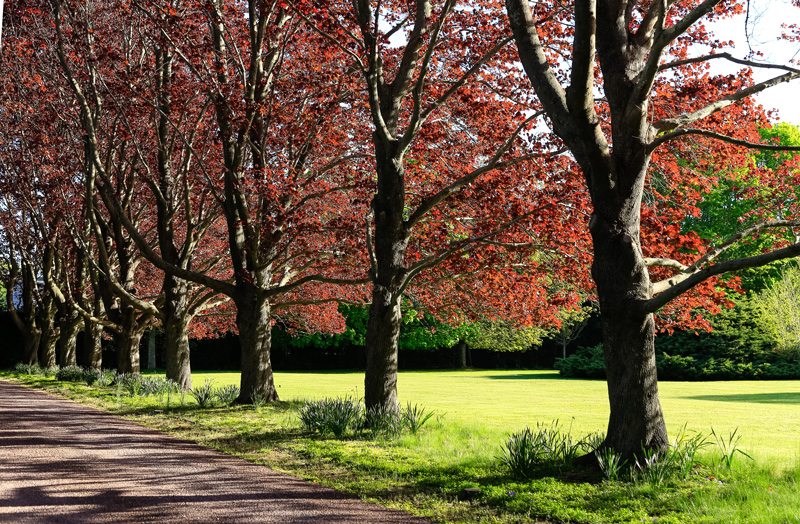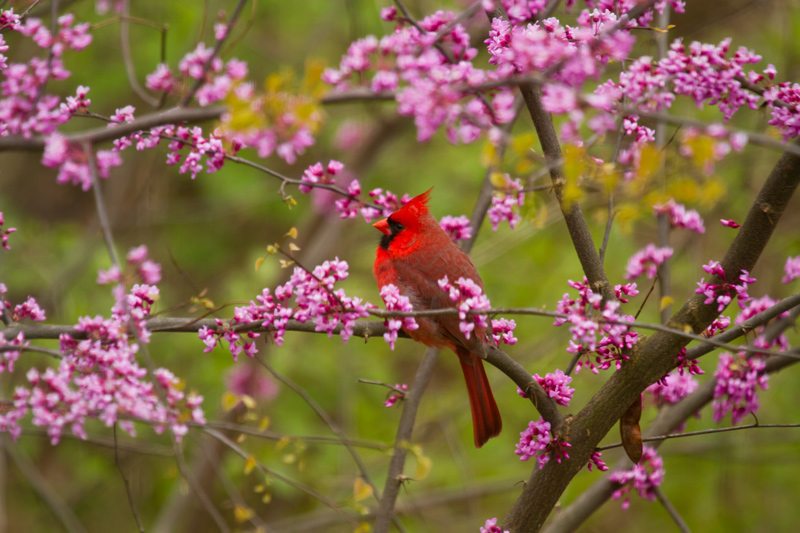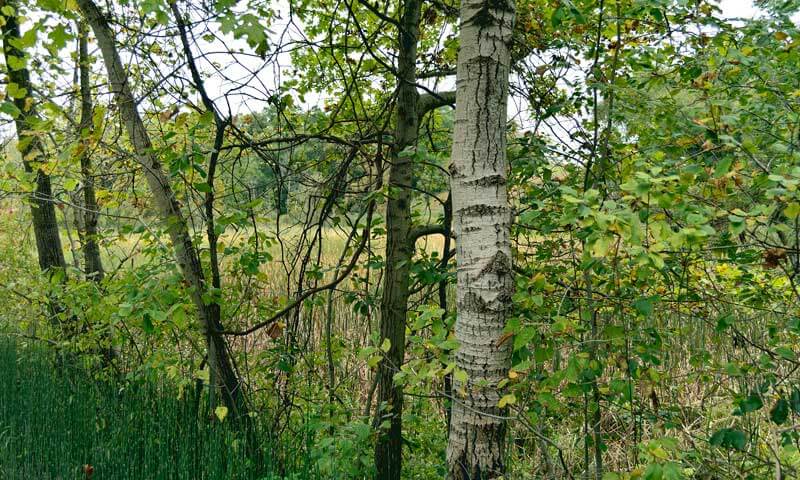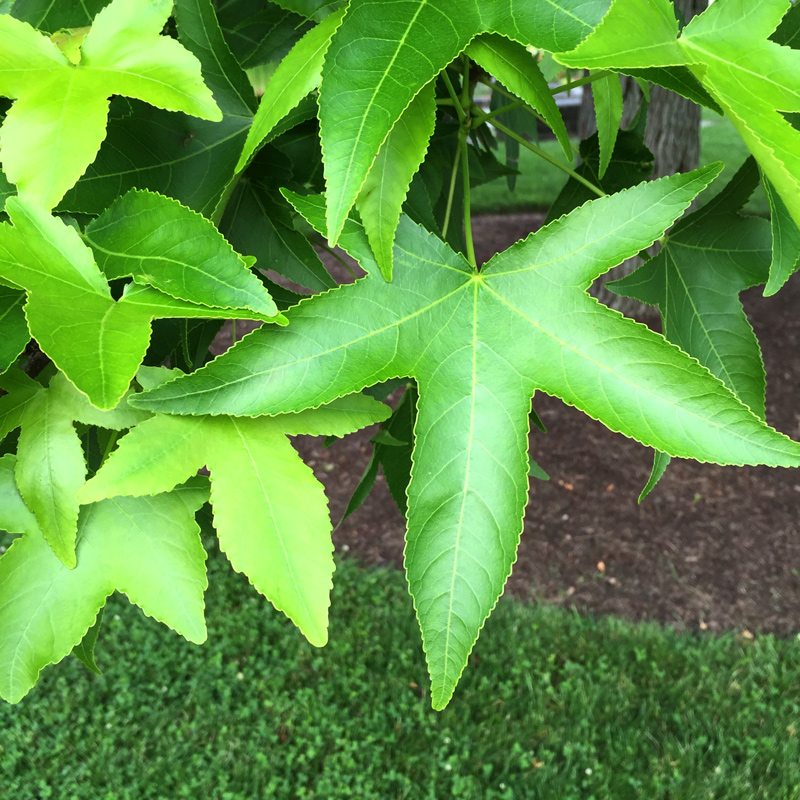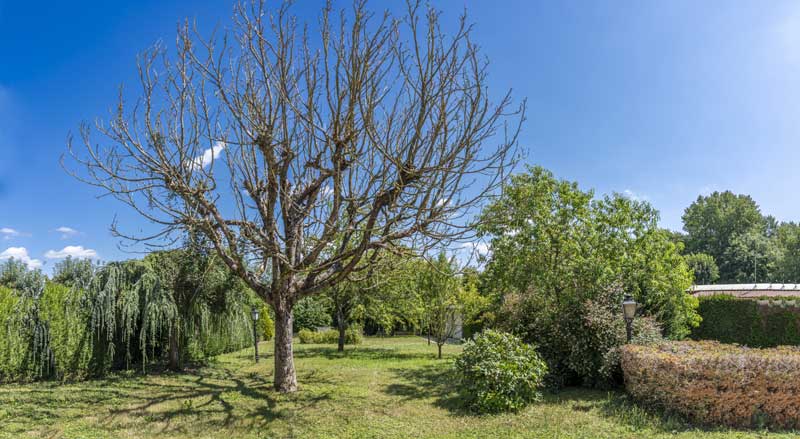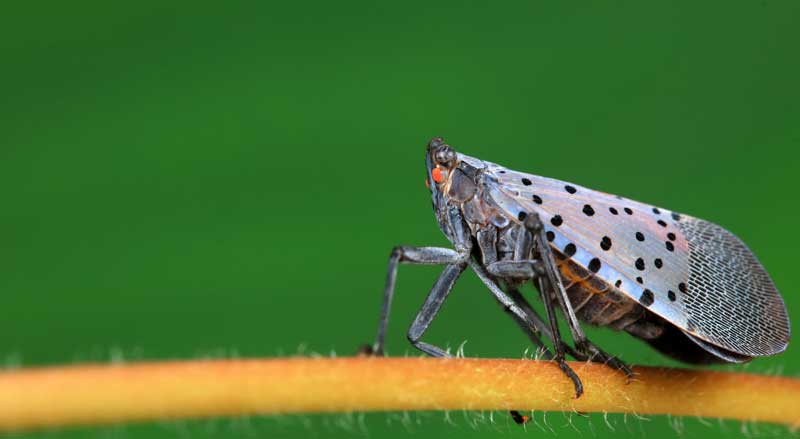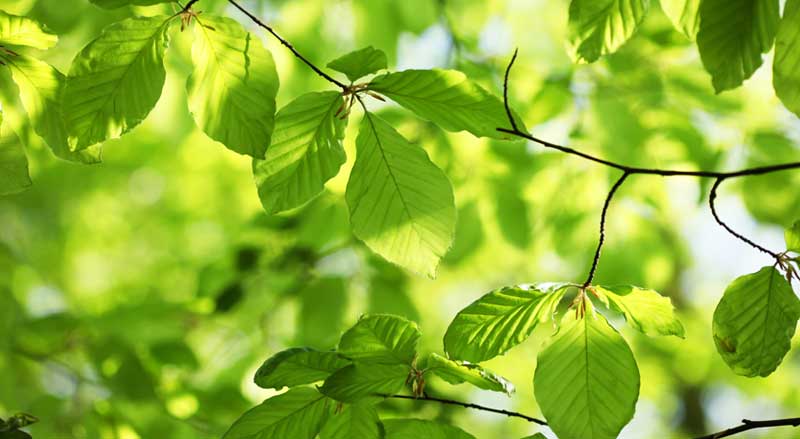The need to prevent soil erosion is a common problem for many property owners. The solution to this issue is dependent on the trees and other vegetation in your landscape.
What is Soil Erosion?
Soil erosion is the natural displacement of the top layer of soil, usually caused by water, air, or in the case of farming, tilling the land. This can create a multitude of problems for future vegetation and even lead to further, more advanced, soil erosion.
Erosion is especially troubling for homeowners whose land can no longer support vegetation because of severe runoff, and ultimately a loss of their landscape.
Signs of Soil Erosion
Wet Patches
Water runoff doesn’t just disappear, it often relocates to another area in your yard. This causes water patches or large puddles to appear throughout your yard.
Ravines
Ravines or gullies are a sign of serious soil erosion problems. These often look like small trenches in your yard where water runoff is at its worst.
Cracks In Soil
Cracks happen when runoff occurs and topsoil is carried off leaving dry, brittle soil with cracks.
How Can Trees Help?
The good news is, there are various ways to help prevent and remedy soil erosion. Maintaining good and healthy soil is crucial for your landscape.
Trees are one of the most natural methods to maintain healthy soil and prevent erosion. Trees have various properties that will help deter soil erosion, including their expansive root system, large canopies, and their transpiration process.
Here’s how to prevent soil erosion using trees.
Root System
A tree’s large root system acts as a bind toward any loose soil surrounding the tree. The roots hold the soil in place while stabilizing the tree and improving the drainage of the soil, so that water drains into the ground rather than flowing atop the surface.
This also helps to prevent soil compaction, which occurs when soil under the surface compacts and hardens, reducing water infiltration and increasing runoff.
Canopies
The large canopies of trees help to prevent soil erosion by reducing the impact of rain onto the ground. The water drains down the leaves and branches and soaks into the soil rather than forcefully hitting the ground, which decreases the amount of soil that is washed away with the rain.
The large canopies also help to break the force of the wind and limit the amount of soil that is carried away with it. This is most effective in large groupings of trees.
Transpiration
Transpiration is the process in which water moves throughout plants, sending water up the roots, through the stems, and out the leaves. It keeps the soil from getting too wet and heavy, preventing runoff by helping the roots to bind the soil into place.
There are a number of trees that can help to prevent soil erosion. Whether your landscape has a hillside, acidic soil, issues with excess moisture, or drought from compaction, there are many varieties of trees that can help prevent erosion. Let’s go over a few:
Trees & Shrubs Good for Hillsides and Slopes
Hickory Tree
There are 18 species of hickory trees, 12 of which are native to North America. Hickory trees can tolerate all soil types and produce tasty hickory nuts in the fall.
They are large deciduous trees with dense foliage and a spreading canopy. Hickory trees can grow up to 80 feet tall.
Douglas Fir
A tall, pyramidal evergreen tree with emerald needles, the Douglas fir grows best on well-drained deep soils. In its northern range, Douglas fir are often found on south-facing slopes, which makes them able to grow and thrive in hilltop locations.
White Oak
The white oak tree is a long-lived oak, native to eastern and central North America. It’s a tall, round stately tree with vibrant red leaves in the fall. A white oak will develop into a massive broad-topped tree with large branches striking out at wide angles, making it an ideal canopy tree.
Black Cherry
The black cherry is a large, native tree found in the Midwest and throughout the eastern United States. It thrives on slopes and hillsides due to the extra water drainage the slope provides. The black cherry flowers in the spring, and then develops dark purple berries during summer.
Trees That Tolerate Clay, Sandy, and Acidic Soil
Eastern Hemlock
One of the more shade-tolerant evergreens, the eastern hemlock is native to the eastern United States. The Eastern hemlock is an evergreen tree that prefers moist soil but can live in acidic soil as well. Be mindful that over time, evergreen trees will increase your soil’s acidity levels.
Sugar Maple
Native to the Midwest region, the sugar maple has luscious and bright-colored foliage. Both a shade and ornamental tree, it has a large canopy and grows to a height of 60 to 75 feet. Sugar maple trees are highly tolerant to alkaline and clay soils.
Black Walnut
Black walnut trees are native to the eastern half of the US; however, it is found throughout the central US as well. It is known to tolerate alkaline soil, clay soil, occasional drought, and even road salt. It yields a nut crop in late autumn and has an extremely deep root system.
Trees That Tolerate Dry Soil
American Red Maple
Known for its vibrant color and rich reds, the American red maple tolerates pollution and dry soil in an urban environment extremely well. It grows fast and provides lots of shade which helps your home maintain thermal balance in the summer.
American Elm Tree
American elm trees are very common in landscape sites throughout North America.
The American elm is known to be able to grow in almost any condition except especially dry soils and areas. It thrives in humid, hot landscapes and can tolerate occasional drought conditions.
Northern Red Oak
NJ’s state tree which grows more than two feet per year for 10 years and provides amazing fall color to any landscape with its bright red foliage. It’s considered a good street tree that tolerates pollution, compacted soil, and occasional droughts.
Eastern Redbud
The Eastern redbud’s heart-shaped leaves are reddish in color during spring and turn yellow in the fall. This tree also produces rosy, pink flowers in early spring.
Trees That Tolerate Wet Soil
River Birch
The river birch naturally grows along riverbanks. But as a landscape tree, it can be planted almost anywhere in the US. It’s known for its rapid growth and its tolerance to wet soils and areas. It produces green, glossy leaves and has a cinnamon-colored bark that curls and peels.
Willow
Willow trees are known to be highly tolerant of wet sites and occasional flooding. They grow in a pyramidal shape in their youth than an oblong-oval to rounded shape at maturity.
This tree is easier than many other types to transplant. It is also a deciduous tree which means it keeps your property cool in the summer and warmer during winter.
Sweetgum
This tree needs plenty of space for root development. It produces star-shaped leaves and brilliant fall colors of yellow, orange, red, and purple. Sweetgum is known to have a high tolerance to occasional flooding, road salt, and wet sites.
Utilizing trees to prevent and repair soil erosion is an environmentally friendly and productive technique. This method will add beauty and value to your property while remedying your issues with erosion.
Trees Unlimited offers a variety of residential tree services to help maintain beautiful, healthy trees and shrubs, maximize the value of your property, and improve curb appeal. For more information about our services and controlling soil erosion in your landscape, contact us today!
This blog has been updated and republished in August 2021.


